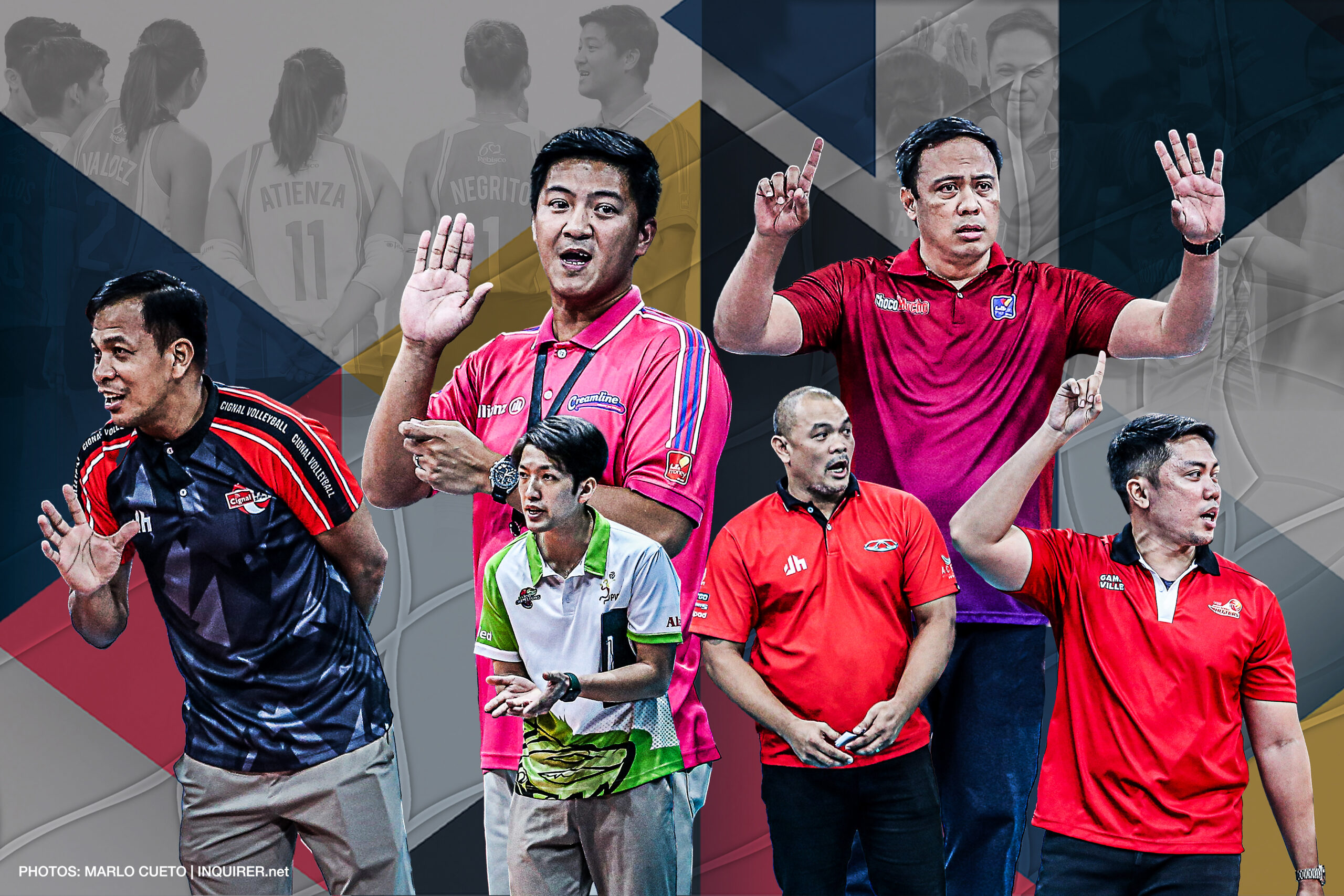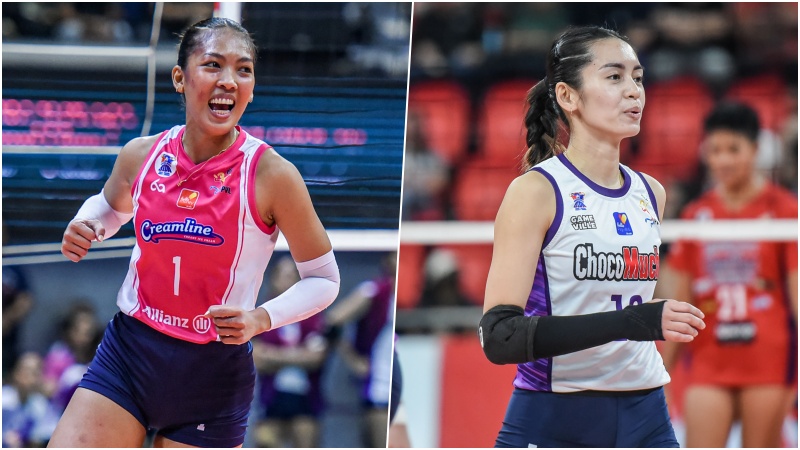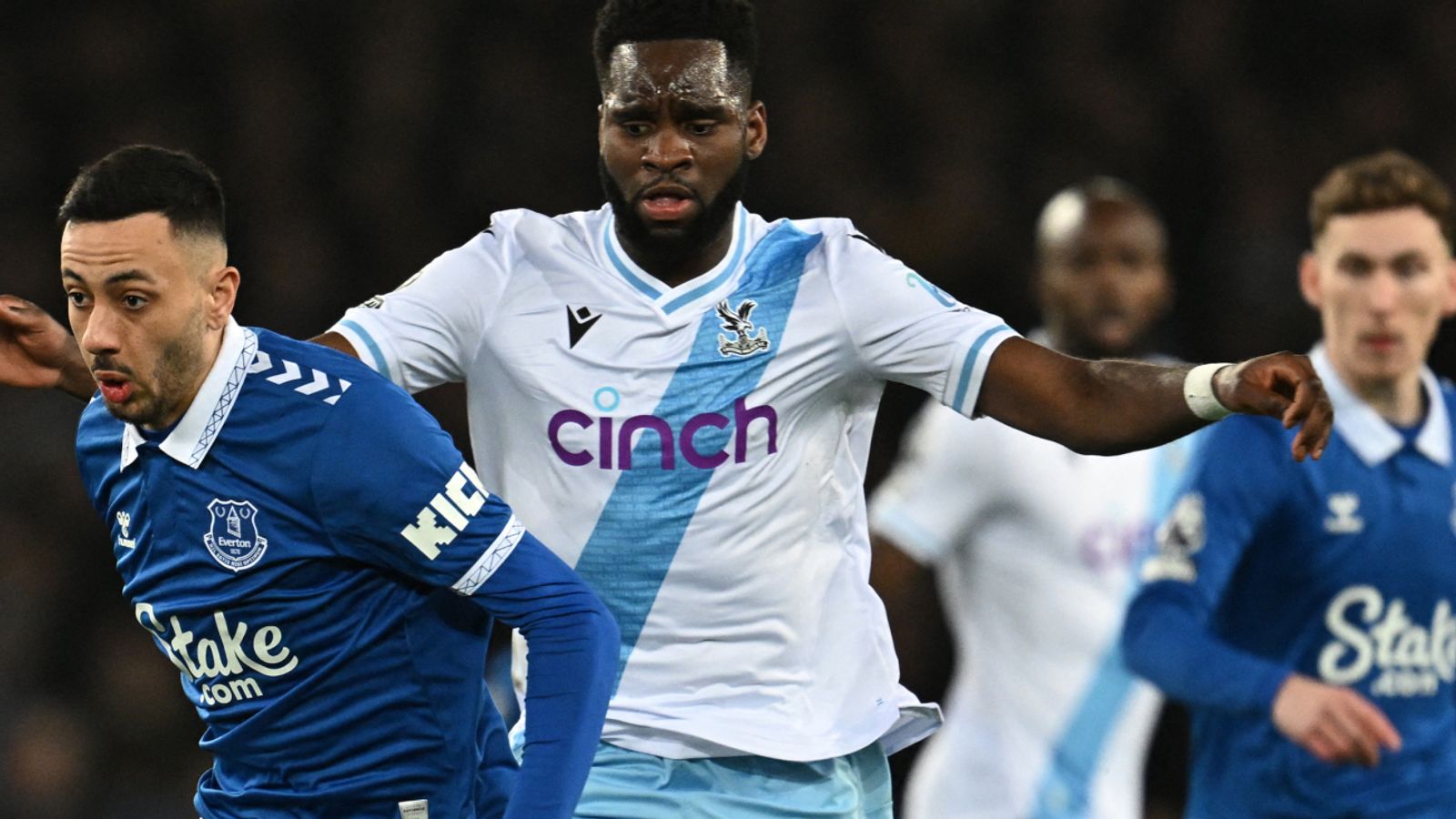PVL coaches reveal their favorite volleyball plays
Jody
- 0

The top PVL coaches reveal their pet plays during games. —MARLO CUETO
Behind every championship, victory, set and point in volleyball is a stable system designed by coaches that help players execute inside the court.
While basketball plays are pretty much well-known, volleyball strategies remain esoteric even with the continued skyrocketing popularity of the sport.
Running or slide attack, pipe attack, outside hit, high ball or four set, Gap or 31 set. It takes a trained eye to watch these plays develop. In contrast, even casual sports fans can spot a pick-and-roll coming before the point guard crosses the eight-second line.
To lift the veil on volleyball executions, the Inquirer dove straight into the playbook of some of the top teams in the Premier Volleyball League (PVL) and tore a few pages of strategies to further introduce fans to the many types of offense setters call on the court.
Cool Smashers, fast play
Behind Creamline’s seven championships—the most in the PVL—is the Cool Smashers’ fast play, which has been vital to their winning system.
Coach Sherwin Meneses often pulls out the fast play from Creamline’s playbook, where it has been drawn even when coach Tai Bundit was still handling the squad.“[That is] the most effective play for us [because] the opponent will have a hard time reading our offense. That’s the most important play for us,” Meneses told the Inquirer in Filipino. “The blockers will have a hard time reading that so it’s so effective in getting a point.”
Newly minted Akari head coach Raffy Mosuela, who played as a libero before, also favors the fast play, which he says is effective when the defense sets the attack up.
The play starts with pinpoint passing and a quick low set to the middle blocker in front of the setter.
“No. 1, you should have an 80 to 100 percent quality passing to be able to set a fast play,” said Meneses, who will lean on liberos Kyla Atienza and Ella de Jesus as well as newcomer Denden Lazaro-Revilla to kickoff Creamline’s fast play.
“You should have a decoy play on the other side at the same time to at least eliminate some of the opponent’s blockers,” Mosuela said. “If you only get a single blocker to the attacker, then you executed the play properly. But if you have a triple block, then the opponent has read you.”
Keys to the offense
Creamline has had the luxury of running this play seamlessly since eight-time best setter Jia de Guzman was the chief playmaker of the team. When De Guzman left for Japan to play as an import in the V.League there, Kyle Negrito was handed the keys to the offense and has ran the set efficiently.
“[The effectiveness] depends on how the opponent will commit to the blocking and once we identify the receiving categories,” Mosuela added. “If we have a good pass, that’s the time we do the play and then [give] our cues.”
“We have a specific play depending on the receiving because receive is No. 1,” Mosuela said.
Like basketball, volleyball has its own version of an isolation where the spiker is set up to attack against a single block. The play starts with a great spacing that will exploit the weakness of the opponent’s net defense.
Choice of Titans, Bulldogs
And that’s coach Dante Alinsunurin’s favorite play for Choco Mucho and the National University (NU) men’s volleyball team. PLDT coach Rald Ricafort and Nxled’s Japanese mentor Taka Minowa also prefer the isolation play which draws the middle blocker away from the opposite hitter.
“In the offense, I really like the isolation play because it has a high percentage for us to score,” Alinsunurin said. “We create a space and then the opponent will only have a single blocker; that’s where it starts.”
“For our two wing spikers, the setter can create an opportunity [to attack] a single blocker,” added Alinsunurin, who in just his third conference of his first season with Choco Mucho produced an MVP in Sisi Rondina and led the Flying Titans to their first-ever PVL Finals.
The former Philippine men’s volleyball team coach also executed the play when the nationals won the silver in the 2019 Southeast Asian Games, with Bryan Bagunas and Marck Espejo anchoring the attack.
NU and ex-national team setter Joshua Retamar has been running Alinsunurin’s play from Bagunas’ UAAP years until in this era of Bulldogs led by Nico Almendras, Michaelo Buddin and incoming rookie Jade Disquitado.
Isolate the middle blocker
He’s not the only one who loves pulling that play out of his pocket.
“It is my favorite play because based on our statistics, it is the most efficient play for us following a first ball,” Ricafort said. “That’s the play that gives us the highest chance to score.”
Minowa also knows the effectiveness of having a setter who can manufacture a one-on-one play for the offense.
“As a setter, you need to always isolate the opponent’s middle blocker,” he said. “If the middle blocker is moving to one side, the setter needs to choose the other side.
“Usually, you have two to three blockers, not one. As a good setter, you can make it one opponent blocker and one attacker.”
Effective vs tall blockers

Setters like Kyle Negrito (left) and liberos like Denden Revilla play key roles in setting up team plays. —PVL PHOTOS
Cignal coach Shaq delos Santos has different variations of the combination play that kept the HD Spikers as consistent contenders and podium finishers in the past two seasons.
Delos Santos has the luxury of running combinations because of his array of hitters like Invitational Conference MVP Ces Molina, rising star Vanie Gandler and Jovelyn Gonzaga. In the coming PVL season, the former UST mentor hopes setter Gel Cayuna also activates middle blockers Ria Meneses and Rose Doria.
“The outside hitter fakes going to the right before going to the left. The middle blocker jumps first and then after that the outside hitter attacks,” Delos Santos said. “That is one of our favorites.”
Farm Fresh setter Louie Romero also tends to utilize a combination play to open up her attackers.
“I would rather have the opponent go for a single block at the same time to help my spikers kill the ball,” she said as the Foxies’ team captain sees the play more effective on teams with tall blockers such as Choco Mucho and PLDT.
Piston’s movement
Kung Fu Reyes, who calls the shots for Chery Tiggo in the PVL and University of Santo Tomas’ women’s team, also has what he calls “patong” play as his favorite offense call which he also used to do in his playing years.
“The middle jumps in zero or first tempo, once the middle goes down, the opposite jumps to attack,” Reyes said. “Once the opponent goes for a single block or they have a scattered defense, it will most likely be a score.”
“Most of the time, it is a perfect play if someone bites from the middle’s fake,” he said of the play that he likens to a piston’s movement, adding that the play relies on a good setter and a good run that starts from the first ball.
Aside from his combination plays, the Cignal coach also wants his middles to execute running attacks, which he used to do when he was still playing for Far Eastern University and the national team.
“It is better to always have a [running attack] because the chances to pull blockers away will be much higher,” he said.
Setter’s IQ
With the combination play having different variations, it all boils down to the volleyball IQ of the setter.
And Cayuna has been doing well, keeping Cignal as a title contender and emerging as the second most successful playmaker in the league with three best setter awards.
Your subscription could not be saved. Please try again.
Your subscription has been successful.
“The setters are really the ones who make the play good, at the same time give what the attacker needs or the kind of ball they want,” Delos Santos said. “So they should really always communicate, the attacker and the setter.”


